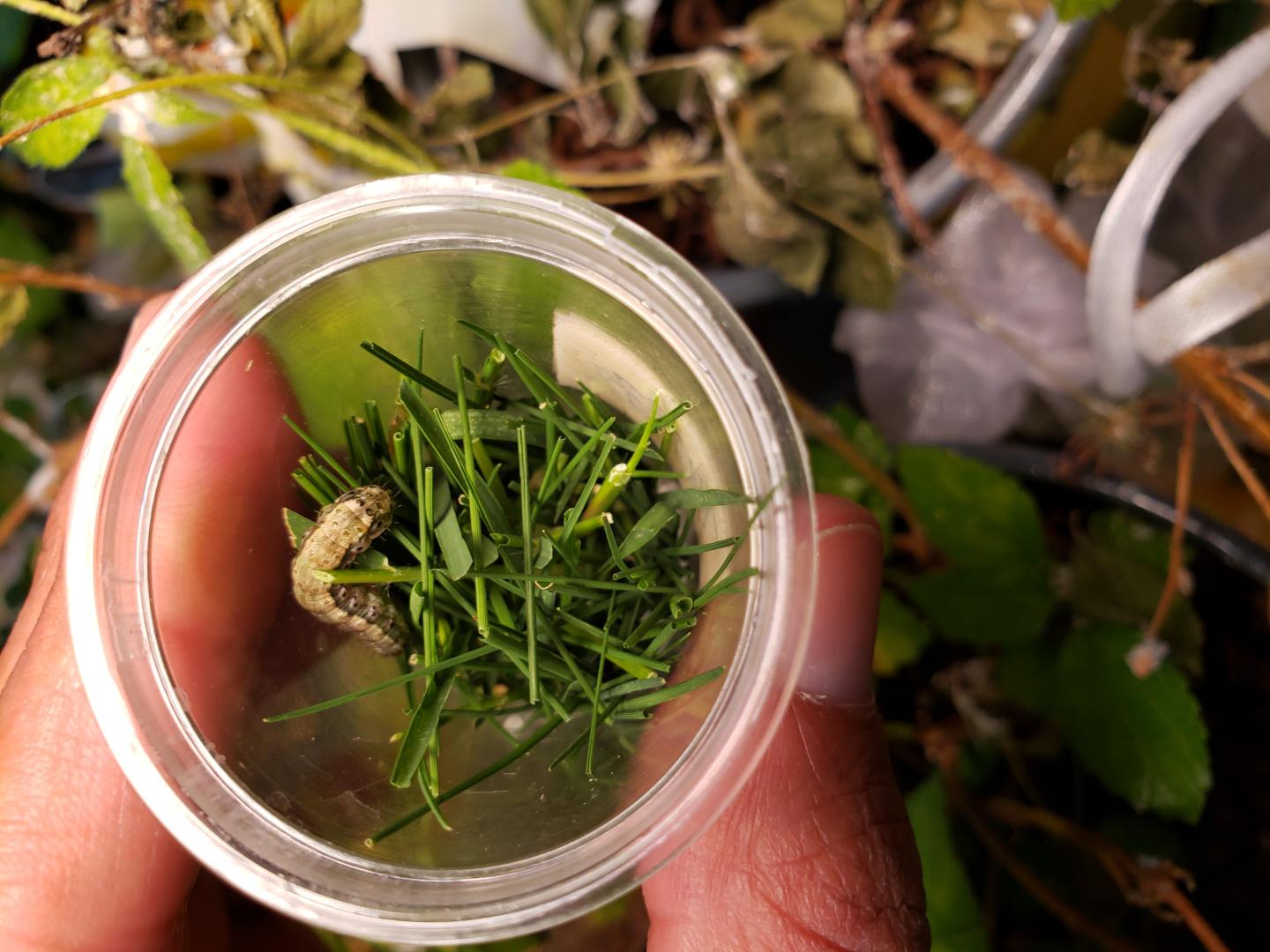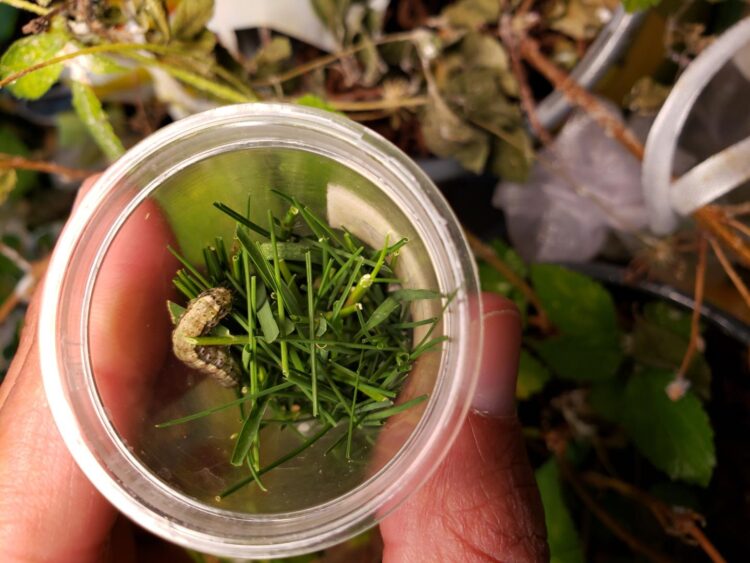Striving for a better understanding of pest resistance in experimental lines

Credit: Gurjit Singh
Tifton, Georgia: A study out of the University of Georgia sought to determine the level of host plant resistance that can be assured by several promising experimental bermudagrass genotypes against potential damages committed by the fall armyworm.
Researchers Gurjit Singh, Shimat Joseph, and Brian Schwartz evaluated 14 different varieties of new bermudagrasses to determine their comparative levels of host resistance in the laboratory, and they published their findings in the article “Screening Newly Developed Bermudagrasses for Host Plant Resistance against Fall Armyworm (Lepidoptera: Noctuidae)” in HortScience.
The fall armyworm (Spodoptera frugiperda) is particularly destructive to warm-season turfgrass species, including bermudagrass, a widely popular turfgrass predominantly used of golf courses, athletic grounds, and ornamental landscapes across the country and throughout the world. Spodoptera frugiperda infestation is often sporadic; however, when it does occur, damage can be severe.
Schwartz notes, “Searching for genetic resistance to the fall armyworm in bermudagrass has been ongoing for over a half century in Tifton. It will certainly take a concentrated and collaborative effort for many more years if we are to make an impact for turf managers in the future.”
In Georgia alone, the turfgrass industry is worth $7.8 billion. From July to late November, landscape maintenance companies and homeowners often apply environmentally unsound insecticides to protect residential and public lawns in urban and suburban areas. Golf courses and sod farms typically use an abundance of insecticides such as bifenthrin to maintain vast stretches of turfgrass for fall armyworm protection.
Host plant resistance against Spodoptera frugiperda could be a valuable tool for reducing or preventing the use of such insecticides.
Singh adds, “The bermudagrass fall armyworm is a fun system to work on but requires careful handling of early 1st and 2nd instar larvae while feeding and taking measurements for larval survival and development. Extra attention was paid to avoid the larval mortality due to manual handling, which ultimately helped getting a better picture of the results.”
The early larval stages of the fall armyworm generally go undetected because they remain hidden within the turfgrass canopy during the daytime until the larvae reach the fourth or fifth instar. The young larvae feed on the grass blades, whereas the late instar larvae consume both the stems and the grass blades. Severely affected turfgrass appears brown because most of the grass blades are consumed. Compared with young instars, late instar larvae are more tolerant to insecticides.
Turfgrass breeding programs have always emphasized the improvement of aesthetic characteristics and tolerance to abiotic factors, such as drought and foot traffic. Because insecticide resistance and nontarget effects of insecticide applications pose serious concerns to the turfgrass industry, alternative control options have recently been emphasized.
As there are no known Spodoptera frugiperda-resistant bermudagrass cultivars available to the turfgrass industry, the researchers tested 14 promising experimental bermudagrass genotypes for resistance to the damages caused by the fall armyworm and to compare their performance to that of the emerging standard bermudagrass ‘TifTuf’. These experimental genotypes are considered “elite” because of their superior turfgrass quality, drought tolerance, shade persistence, rapid growth, and resistance to foot traffic during multiple years of field testing.
For the study, all the turfgrass genotypes were maintained in a greenhouse at the University of Georgia, Griffin Campus. The bermudagrass cultivar ‘TifTuf’ was used as a susceptibility control, and ‘Zeon’ bermudagrass was used as a control for its resistance to the fall armyworm.
The experiment was conducted by adding treatments of armyworms to each isolated bermudagrass cultivar. Larval survival and development were recorded at 2-day intervals. To document larval development, larval length from the head to the tip of the abdomen, head capsule width, and larval weight were recorded.
To determine the performance of the bermudagrasses relative to the controls, survival, development, and overall susceptibility indices were developed. A criterion was established to compare and contrast the performance of the bermudagrasses with the commercial standard, ‘TifTuf’. Fulfillment of the criterion was “high” if the genotype proved more resistant than the commercial standard, “comparable” if it proved similar, and “low” if it failed by comparison.
The researchers identified a few of the new bermudagrasses that were comparable to the industry standard ‘TifTuf’ in terms of susceptibility to armyworms. Some genotypes were less susceptible to neonates, whereas other bermudagrasses showed reduced development rates, potentially exposing the larvae to severe weather and predation. The results also illustrated that resistance or susceptibility screening can be achieved by evaluating pupal parameters, which will be especially useful when breeders screen for armyworm resistance or susceptibility using several genotypes at one time.
Although this study identifies few promising experimental genotypes, more studies are warranted to understand the consistency of their performance in field conditions because host plant resistance continues to be a desirable goal in the management of fall armyworms in turfgrass.
Joseph observes, “The sod producers, golf course superintendents, and homeowners spent a substantial amount of money to manage fall armyworm.” He goes on to state, “Toward developing fall armyworm resistant bermudagrass, this study is an important first step.”
###
The complete article is available on the ASHS HortScience electronic journal web site: https:/
Founded in 1903, the American Society for Horticultural Science (ASHS) is the largest organization dedicated to advancing all facets of horticulture research, education, and application. More information at ashs.org.
Media Contact
Michael W. Neff
[email protected]
Related Journal Article
http://dx.





